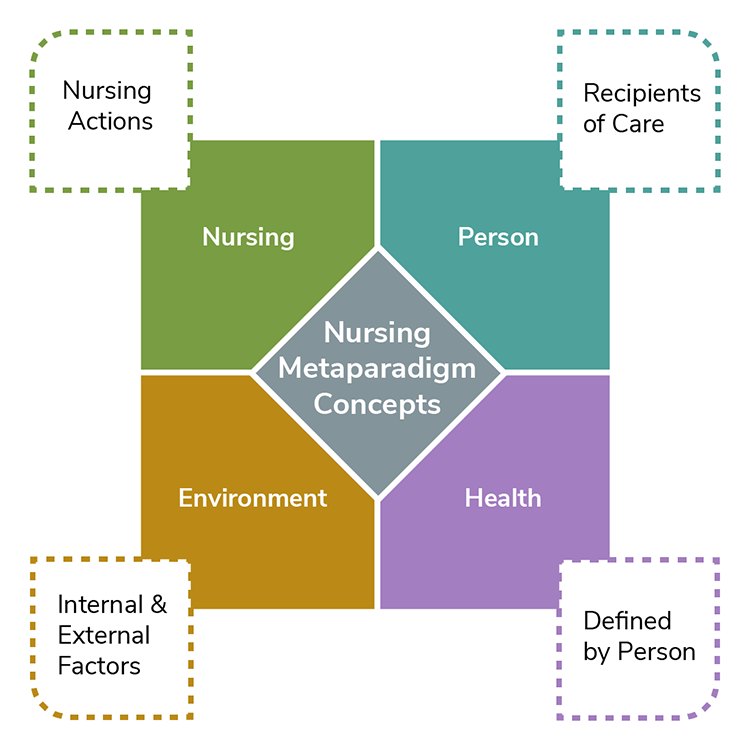This is a Collaborative Learning Community (CLC) assignment.
Nursing theories are tested and systematic ways to implement nursing practice. Select a nursing theory and its conceptual model. Prepare a 10‐15 slide PowerPoint in which you describe the nursing theory and its conceptual model and demonstrate its application in nursing practice. Include the following:
Provide three evidence-based examples that demonstrate how the nursing theory supports nursing practice. Provide support and rationale for each.
Please look at the bottom for the Chapter related to the question. ( The Theory that my team choose was Example of Dorothy Orem’s Self-Care Deficit Theory )
Nursing Theory
A theory is a collection of statements that explain a relationship between two or more ideas. Theory maintains a central role in the evolution of the nursing discipline. It is something all nurses use in their daily practices, whether known or not. Relatively new, nursing theory is a structure of purposeful and systematic ideas that help to organize disciplinary thinking and influence practice. Much discussion and debate have occurred regarding the various theory definitions. Levine (1995) promoted acceptance of nursing theory, which she called the intellectual life of nursing. She identified that students often fail to embrace nursing theory and do not fully grasp the importance of nursing theory and its relevance for practice and education.
Understanding nursing theory strengthens the focus of care by guiding nursing practice. It may help to think about nursing theories as various lenses used to view different perspectives of known nursing phenomena. For example, Dorothy Orem’s self-care deficit theory focuses on assisting others in managing self-care to maintain or improve human function at an effective level (Orem, 1995). Also, Sister Callista Roy’s adaptation theory explains how individuals are in constant interaction with a changing environment and that the individual must adapt to change to have a positive response (Creasia & Friberg, 2011).
Example of Dorothy Orem’s Self-Care Deficit TheoryAn elderly man recently received a total hip replacement. During the discharge process, the registered professional nurse educates the patient about many things, including activity restrictions, medications, and wound care. The nurse also reviews activities of daily living, such as showering and toileting. The nurse realizes that the patient’s balance may be altered and discusses fall precautions with the patient. Detailed discharge instructions are an example of moving the patient from a state of dependence on others for care to a state of independence and self-care.
Nursing theory is present in day-to-day interactions with patients. The core values derived from theoretical assumptions can serve as a foundation upon which to build practices. The goal of applying theory is to improve practice.
The nursing profession is an art and science involving a complex mix of many parts. Nurses are expected to perform the science of nursing through medical and technical competencies, such as nursing skills, academic knowledge, and professional performance. Nurses must become lifelong learners and engage in continuing education throughout their careers to maintain those nursing skills and competencies. Included in the science of nursing are theories, conceptual models, and research that is specific to nursing. The art of nursing requires a foundation of nursing skills, academic knowledge, and professional performance. It is difficult to define or measure the art of nursing other than by looking at the pronounced noticeability of its absence. Treating patients with dignity and respect, being cognizant of nonverbal cues, and using active listening and communication skills are all qualities patients and families value highly. Nurses should strive to find a balance between the science and the art of nursing in their practices (Palos, 2014).
Nursing is a knowledge-based discipline and profession that incorporates a body of knowledge to guide its practice (Smith & Parker, 2015). Because nursing is a profession, nurses are required to meet specific educational qualifications. Education is systematically obtained from colleges and universities that ultimately produce knowledge-based professional nurses who can practice autonomously. The following characteristics define the meaning of a professional (Creasia & Friberg, 2011):
- Formal education required
- Lifelong mission, recognized as life work
- Encompass knowledge
- Service to society
- Practice autonomously
- Practice guided by ethics
- Professional culture and values
- Compensation received
Metaparadigm
Theories are built upon a foundation of concepts. Theoretical statements compose a theory. The concepts incorporated into theoretical statements include areas of interest to the discipline. For nursing theory, these concepts include person, environment, health, and nursing, also referred to as metaparadigm. The metaparadigm includes basic assumptions regarding the theory and highlights areas vital to the nursing discipline and ultimately patient care (see Figure 2.3).
Figure 2.3
Metaparadigm of Nursing Concepts

Note. Adapted from “Nursing Metaparadigm Concepts,” by CJT Consulting & Education, 2017.
Person refers to the patient, client, individual, family, community, or group. These are the recipient(s) of said nursing care. Environment includes external and internal space associated with the person. Health encompasses all areas of, or lack of, the person(s) wellbeing. As the final metaparadigm component, nursing expresses the goal of nursing that is specific to the theory (McEwen, 2007).

